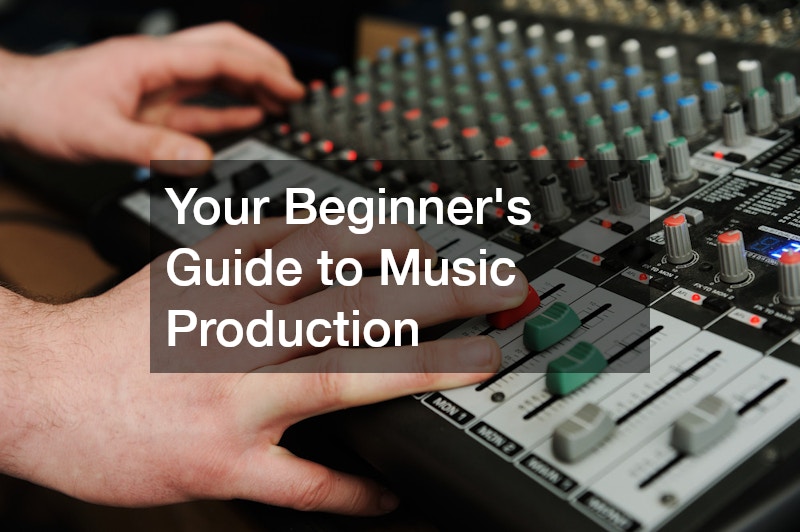When it comes to music production, it can seem like a complex and daunting task for beginners. However, with the right tools, resources, and understanding, anyone can get started on creating their own tracks. Whether you’re looking to produce beats, experiment with genres, or simply explore the world of digital audio, this beginner’s guide to music production will help you navigate the process. We’ll also dive into the exciting world of lofi sample packs and how they can enhance your music production journey.
1. Understanding Music Production
At its core, music production is the process of creating a piece of music from start to finish. It involves everything from writing and arranging to recording, mixing, and mastering.
While this may sound overwhelming, modern technology has made it easier for beginners to get started. Digital audio workstations (DAWs), software plugins, and lofi sample packs are just a few tools that make the process more accessible.
Music production typically breaks down into a few key stages:
Composition and Arrangement: This is where you create the basic structure of your song, including melodies, chords, and rhythms.
Recording: This involves capturing the audio, whether it’s vocals, instruments, or digital instruments.
Mixing: After recording, you adjust levels, EQ, and effects to balance the track.
Mastering: The final stage involves fine-tuning the overall sound of the track to ensure it sounds great on various platforms.
2. Choosing Your Digital Audio Workstation (DAW)
One of the most important steps in music production is choosing the right DAW. A DAW is the software where you record, arrange, and edit your music. Popular DAWs include:
Ableton Live: Known for its intuitive interface and live performance capabilities.
FL Studio: A favorite among electronic music producers for its simplicity and features.
Logic Pro X: A professional DAW used by many artists and producers, known for its powerful tools and comprehensive interface.
GarageBand: An excellent entry-level DAW for beginners using Mac, offering a simplified yet functional experience.
Regardless of which DAW you choose, most have a similar workflow and come with tutorials to help you get started.
3. Understanding Samples and Sample Packs
Samples are short audio recordings that you can use in your music production. They can be drum hits, vocal phrases, instrumental loops, or even ambient sounds. Sample packs are collections of these sounds that are curated for specific genres or styles of music. One particularly popular genre for beginners and seasoned producers alike is lofi music, which often uses lofi sample packs to create its signature sound.
Lofi sample packs are collections of sounds that feature vintage, warm, and often slightly imperfect textures. These packs are specifically designed for lofi music production, which is known for its chilled-out, nostalgic sound. The great thing about using sample packs is that you don’t need a recording studio or live instruments to get started—just drag and drop the sounds into your DAW and start creating.
Sample packs, particularly lofi sample packs, often include:
Drum Loops: Relaxed, swung beats with a vintage feel.
Melodic Loops: Soft piano, Rhodes, or guitar loops that evoke emotion.
Ambient Textures: Background noises like vinyl crackle, tape hiss, or atmospheric sounds.
One-Shot Samples: Individual hits or sounds, such as a kick drum or snare, which you can use to build your own rhythms.
4. How to Use Lofi Sample Packs in Your Music Production
Lofi music has become extremely popular for its relaxed, nostalgic vibe, and it’s relatively simple to produce, especially if you’re just starting out. Lofi sample packs can be a game-changer for beginners, as they provide pre-made sounds that fit the genre’s aesthetic.
Here’s how you can use lofi sample packs in your productions:
Step 1: Choose Your DAW: Open your DAW and load the sample pack into your project. You can browse through the pack and audition sounds until you find something you like.
Step 2: Create a Drum Beat: Start by dragging a drum loop from the sample pack onto your timeline. Many lofi sample packs include pre-made drum loops, making it easy to get that laid-back, swung feel. Alternatively, you can use one-shot drum samples to create your own custom beat.
Step 3: Add Melodic Loops: Next, drag in a melodic loop like a piano or guitar riff. These loops are often already processed to sound vintage and warm, so you don’t need to do much to make them fit.
Step 4: Layer Textures: To create the nostalgic, worn-out sound that lofi music is known for, layer some ambient textures over your track. Sounds like vinyl crackles or tape hiss can add depth and character to your production.
Step 5: Fine-Tune the Mix: Once you’ve arranged your track, you can tweak the levels, apply EQ to clean up the sound, and add effects like reverb or delay for more atmosphere.
Conclusion
Music production is a rewarding and creative process, and with the help of lofi sample packs, you can quickly start producing tracks that sound professional. From choosing the right DAW to understanding how to integrate samples into your music, this beginner’s guide offers a roadmap to getting started. As you explore different genres and techniques, you’ll gain confidence in your production skills and discover the joy of making music.
.


